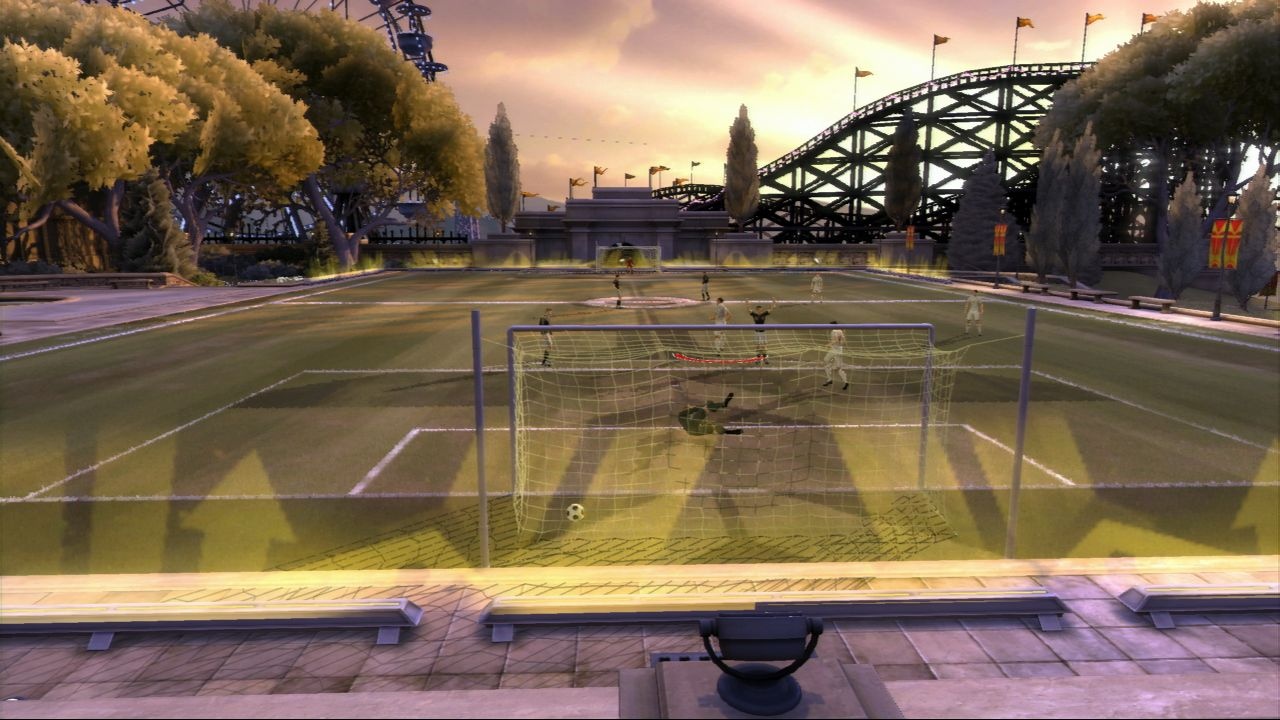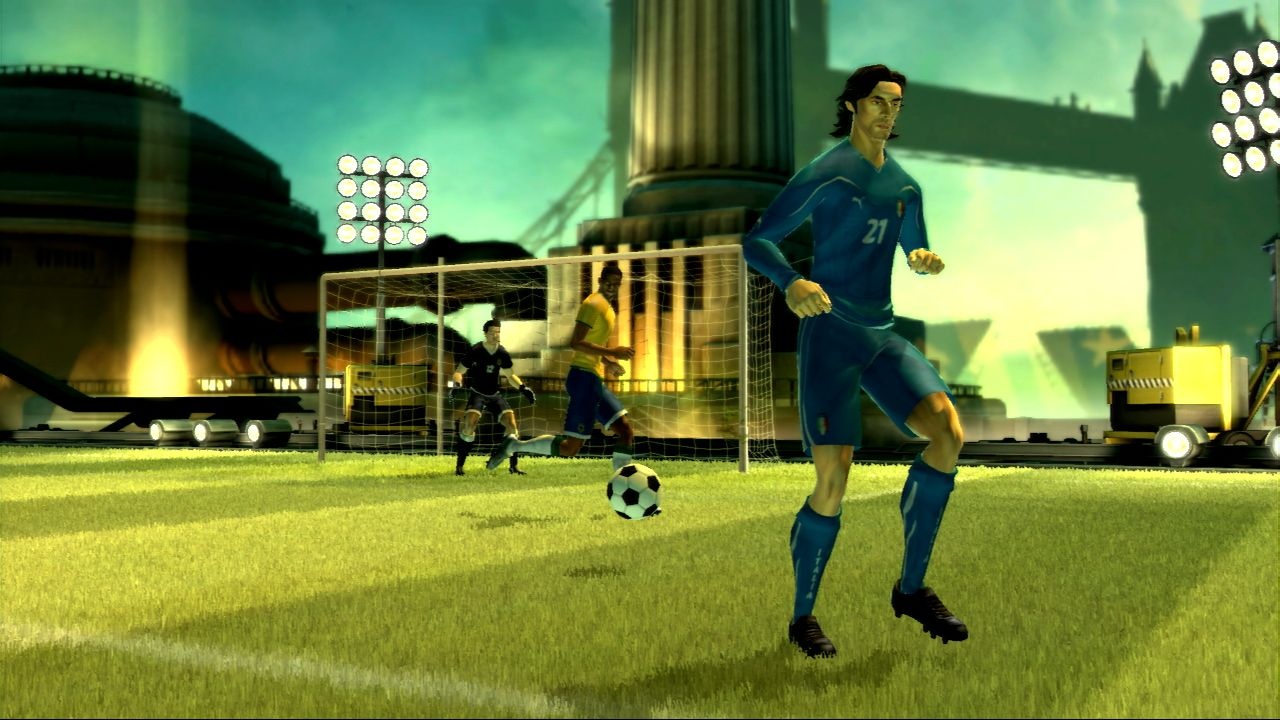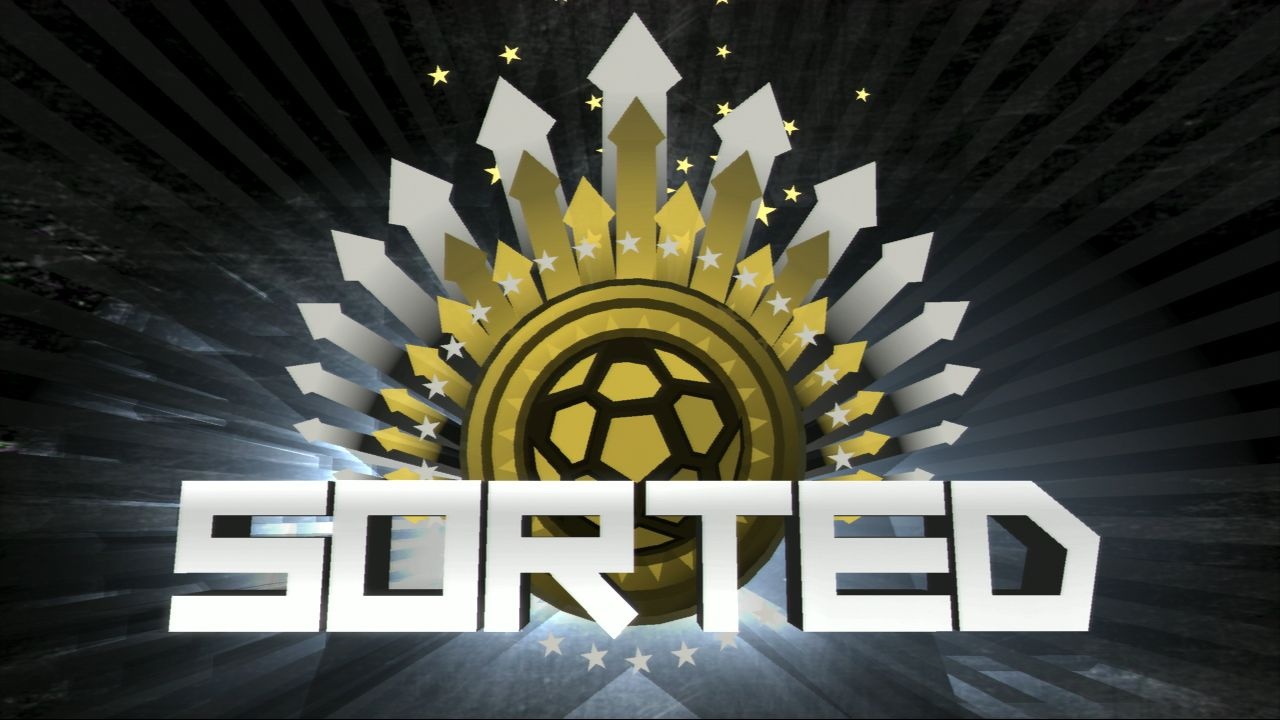UK REVIEW--While FIFA and Pro Evolution Soccer have the simulation football market pretty much sewn up, the retirement of the FIFA Street series has left space for a new challenger in the arcade end of the genre. Sadly, Pure Football (or Pure Futbol, as it's known in North America) isn't up to the challenge of filling that gap. The game may be accessible and fun in short bursts, but it soon becomes frustrating and repetitive, with little in the way of depth. Though there is an online mode and a well-structured Campaign mode, the lack of Tournament or Cup mode affect the game's longevity, particularly for offline players.

Pure Football portrays an alternate universe where the world's best players get together to play jumpers-for-goalposts style football. These are unofficial, unmediated matches free of the constraints of the stadium--22 players are reduced to 10, there's no referee to halt the pace of the game, and there are no linesmen to call offside. The matches also take place in novel locations, including the port of Marseilles, the canals of Amsterdam, and even a factory in Milan. Because of this concept, the game adopts an exaggerated, cartoon look for its players and locations, but there are still a limited number of 17 international teams with real-world players, as well as three classic teams to unlock in the Campaign mode.
The control system is broadly similar to other football games. The face buttons perform passes, through balls, crosses, and shots on goal, and you hold the latter three buttons down to increase the power of the shot. However, Pure Football is based around various power bars and meters, which are key to performing well. When taking a shot, for example, you have to let go of the button as the arrow underneath your player hits the white area of the bar, which is approximately three-quarters of the way along. If you let go of the button any time before this, you'll land in the green area, which will still result in an accurate shot. However, if hold on for too long, you'll enter the red section of the bar, at which point the shot is pretty much guaranteed to go off target.
Sadly, this system doesn't feel responsive enough. There's a small but annoying lag between pressing the button and seeing the bar onscreen, and while you get used to it after a while, you're still frequently intercepted before you pull off the intended shot. The game pushes you into trying to score by crossing the ball into the box and then finishing up with a striker--the idea being to hit the pure zone on both the cross and the shot to score the goal. However, it's difficult to get both right, meaning that straight shots on goal provide a much greater chance of actually scoring, especially given the frequency with which keepers spill the ball. This results in repetitive end-to-end play, as each team goes back and forth making a few passes before taking a shot just outside the box.

There are a lot of different bars and gauges in general, with a couple also adorning the top of the screen that relate to your team. Your "pure" bar is filled by making good plays, like taking shots on goal or kicking accurate crosses. If you get the meter full, you can unleash a perfect shot without having to worry about the white bar--your striker will hit the ball perfectly regardless of how long you hold the button. There's also a foul system--if you perform a mistimed sliding tackle, this bar will start to fill up. If you land more than two particularly offensive tackles, a penalty will be awarded to the other team.
These power bars and meters mean that Pure Football plays a novel game of football, but it soon becomes rather repetitive. Matches are closer to the end-to-end nature of basketball rather than football, which suits the arcade nature of the game, but there's little room for nuanced build-up play. The pace of the game is fast--you're given five seconds for throw-ins, corners, and goal kicks, and while the matches are usually less than five minutes, they're nearly always high scoring. The high-score lines have more to do with the tricky defending and the inept goalkeepers though. It's often frustrating to get the ball from your opponent--you can hold the left trigger to strafe the attacker and attempt to take the ball cleanly, but it's difficult to time just right, while sliding tackles usually end up adding to your foul meter. The goalkeepers also fail to save shots even from way outside the box and often deflect the ball even if they do, resulting in easy follow-up shots.
Despite these gameplay issues, the Campaign mode is structured in a way that keeps you coming back. You start by making your own player, including his name, look, and playing position. Then you make a team, including its title and kit design. The customisation options are plentiful, allowing you to change the size and placement of major facial details and re-create your favourite team shirt, for example. You then get a selection of low-level players to add to your squad and unlock better players as you progress. Each match has its own set of winning criteria that you need to meet to progress, such as beating a team within a certain time frame or scoring a certain number of goals. There are also separate tasks to perform that will unlock new players--if you make a certain number of passes or make sure that the opponent only gets a limited number of shots on goal, he'll be made available to you at the end of the match. Individual pure points can also be earned throughout the campaign, which can then be spent on upgrading your created player. The myriad of challenges means there's some replay value to the campaign, especially because you can unlock classic players, like Zinadine Zidane and Gary Lineker.

Along with the Exhibition and Training modes, Pure Football has an online mode. The online progression is separate from your single-player game--you rank up in the online divisions by beating other people, and there are separate online challenges, such as winning with each of the national teams or winning a match by a certain number of goals. The online game can be laggy, you have to sign up for Ubisoft's Uplay service, and it suffers the same problem as other football games in that players frequently quit matches. Thankfully, if that happens, you automatically win the game. The ability to share custom created players online and buy up to 10 using pure points is also a nice touch. That said, the option to set up your own leagues and tournaments--a well-established feature of every other game in the genre--is sorely lacking.
The game's presentation may be basic, but it possesses some style, with well-realised stadiums and real-world players that are exaggerated but still recognisable. The animation system is also capable of providing some spectacular goals, from volleys to overhead kicks, and scoring with an athletic finish is one of the best aspects of the game. However, the PS3 version suffers from noticeable slowdown when the action gets intense. On the audio side, the single piece of menu music tires quickly, but the real problem is the lack of match commentary, which is replaced with embarrassing banter from the players, such as "Nice hands keeps!"
Pure Football is a disappointing attempt at an arcade football game, with its main downfall being the frustrating and repetitive gameplay. The campaign may be nicely structured and even quite addictive despite the slog of the gameplay, but even if you can overlook this basic flaw, the lack of game modes, including Tournaments and Cups, is a real problem. There's some potential in the "no rules" premise of the game, and it can be fun in short bursts, but a complete lack of depth means that Pure Football is far from entering the premier league of football games.